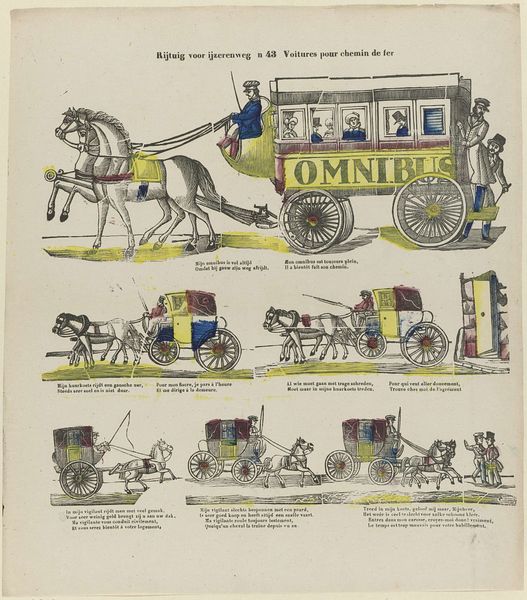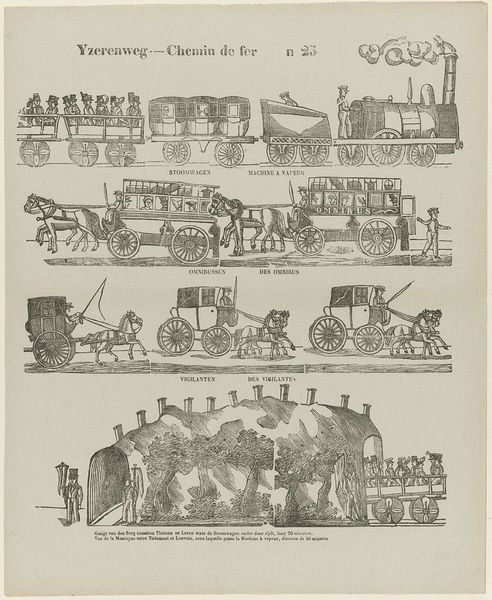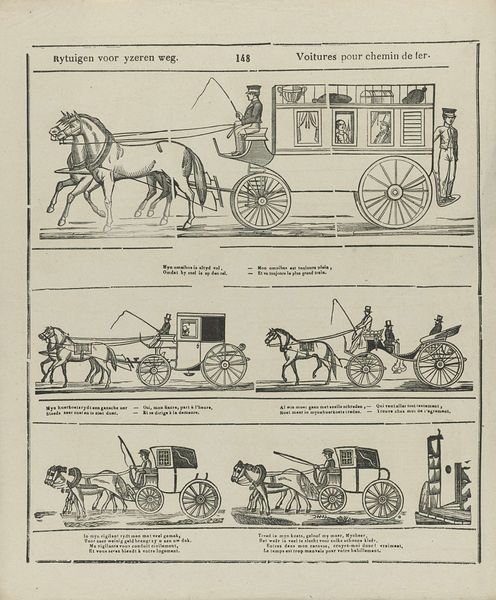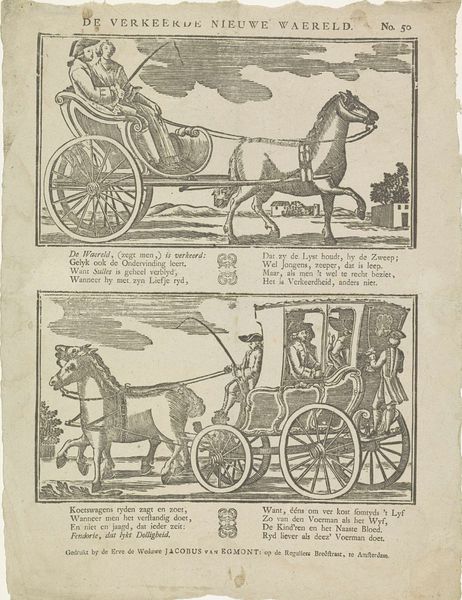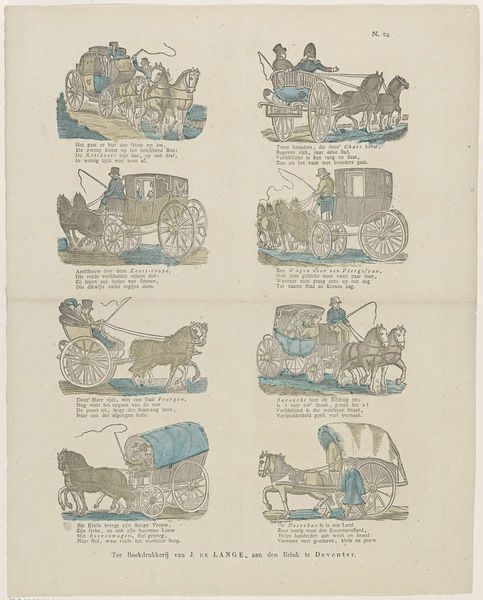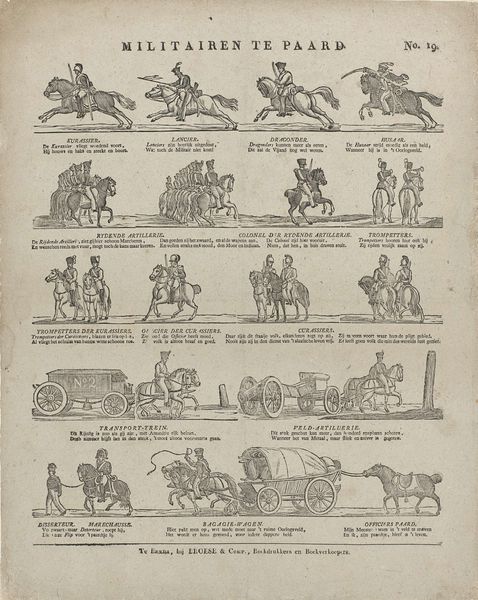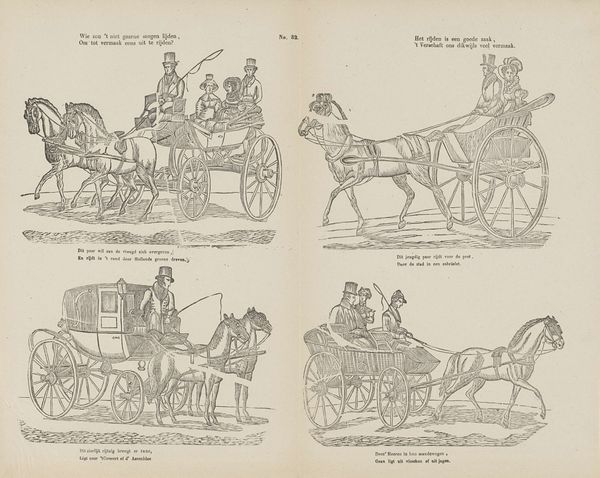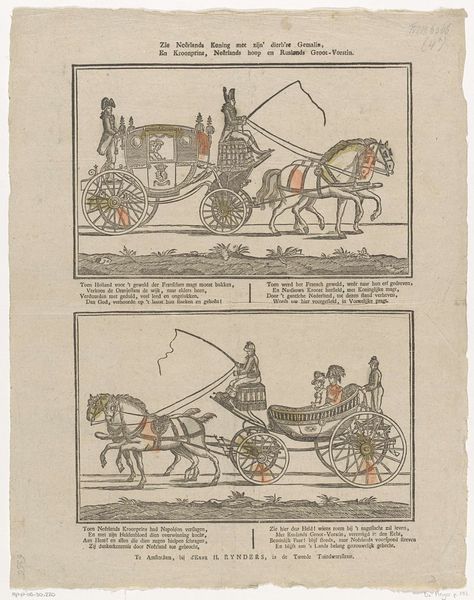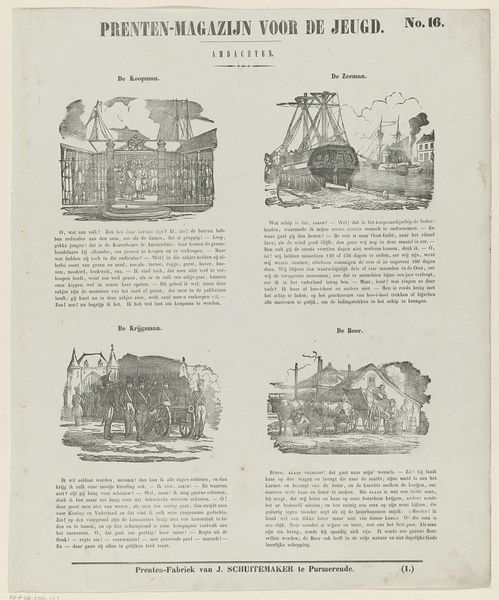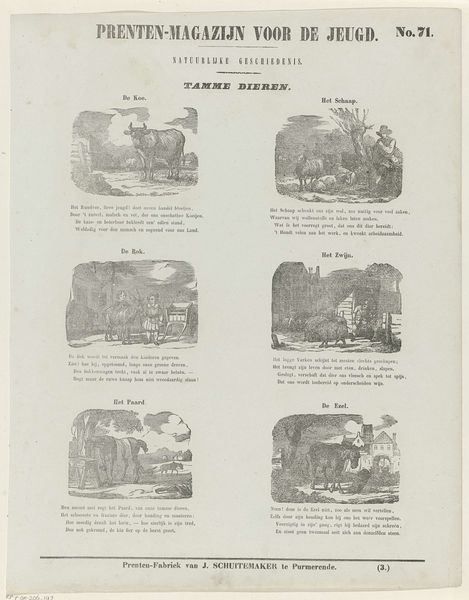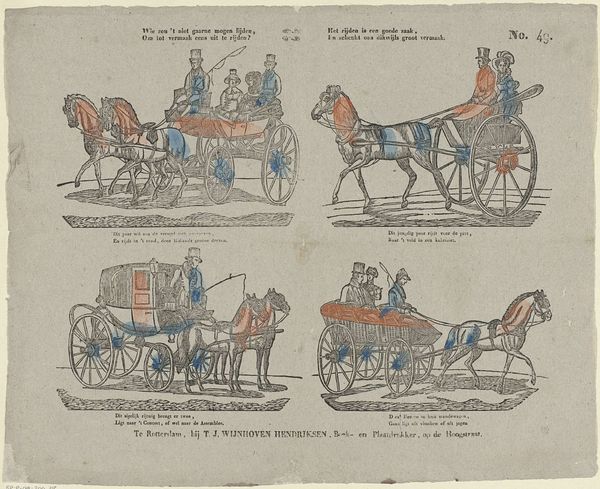
print, engraving
# print
#
old engraving style
#
geometric
#
line
#
cityscape
#
history-painting
#
engraving
Dimensions: height 400 mm, width 339 mm
Copyright: Rijks Museum: Open Domain
Curator: Allow me to introduce this detailed print, created sometime between 1856 and 1900 by Glenisson & Zonen. It's titled "Rijtuig voor ijzerenweg / Voitures pour chemin de fer"—Carriages for the Railway. Editor: Oh, my, it looks like a page ripped from a bizarre catalogue! All those earnest little horse-drawn contraptions, each striving to be fancier than the last. There’s such an air of hopeful aspiration… doomed, of course, by the oncoming train. Curator: Precisely. This piece showcases different types of carriages prevalent during the rise of railway transportation. What fascinates me is the implicit narrative about class and mobility during the industrial era. Editor: Class anxiety, indeed. Look at the cramped "omnibus" up top—clearly mass transit. But then, further down, the carriages get swankier, smaller, more private. Like status distilled into polished wood and spoked wheels. Are those tiny rhymes supposed to be advertisements? Curator: Likely so, it demonstrates an attempt to promote these horse-drawn vehicles even as the railways began to dominate transportation. It speaks to the tensions of technological progress and established social hierarchies. These would have likely been advertisements to sell the carriages at a higher price based on individual needs. Editor: I see that now, though they're also just tragic in a sweet sort of way. Like a carriage builder screaming into the wind and no one hears him over the sound of an oncoming train. This must have been around the time horsedrawn vehicles transitioned into being just pleasure-rides! Curator: A valid point! The transition reflects not only a shift in transport, but in the meaning ascribed to it. What once represented progress and commerce slowly transformed into symbols of leisure and, yes, even a certain quaint nostalgia. Editor: Well, I definitely feel that quaint nostalgia looking at this piece. So wonderfully overwrought. One might as well appreciate all this finery, right? Curator: Agreed. It provides such a revealing glimpse into a society grappling with dramatic technological and social change.
Comments
No comments
Be the first to comment and join the conversation on the ultimate creative platform.
